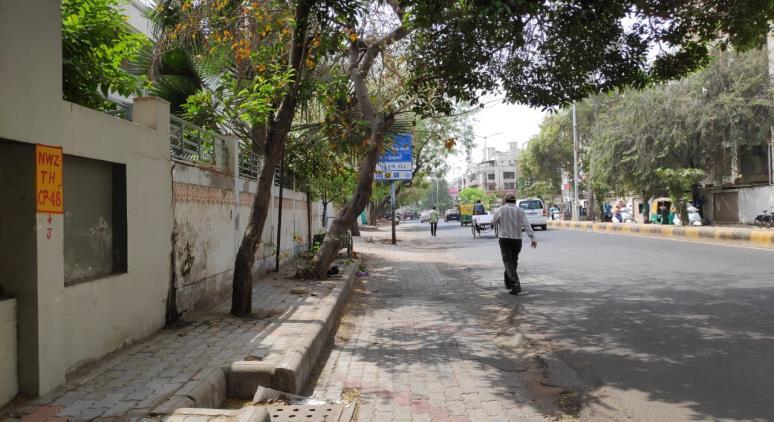
8 minute read
Chapter 7: Conclusion
from Pedestrian Mobility
by Shrey Patel
Chapter 7: CONCLUSIONS
Chapter 7.: CONCLUSION
Advertisement
Establishing pedestrian zones is essential for separating individuals from vehicle traffic and encouraging them to return to safe, secure, and stimulating environments in urban areas. Therefore, this research mainly focused on pedestrians and their movement in the city.
- There are many pedestrian facilities like footpaths, pedestrian crossing, street corners, street furniture, etc. which play a crucial role in street enhancement. The research includes the design standards of pedestrian facilities from ITDP guidelines. - There are many attributes like accessibility, connectivity, safety, comfort, etc. play an important role to give better pedestrian facility. - The research gets references from various case studies from different places like Stroget,
Auckland, Bangalore which include the overview of streets, key elements of streets, goals, and evaluation of streets.
To understand the pedestrian mobility research includes the live cases of the streets of Gurukul and Maninagar, Ahmedabad.
- The research talks about the data of pedestrian mobility and problems in both the areas are facing recently. - The understanding of pedestrian mobility through the building typology, street hierarchy, footpath facility, pedestrian flow, etc. and understand the issues of the area. - The data collection of the study is done by main three things: manual data count, video, and survey of people. The detailed survey of the street gives a better understanding of the street. - The manual data count and video survey give a detailed count of different modes of travel like pedestrians, 2 wheelers, cars, buses, rickshaws, street vendors, etc. - The research includes the questionnaire of Gurukul roadasked different age groups from all over the city to know about the street. - The survey provides information about the purpose of visit streets like shopping, walking, eating food, etc. among all these activities most people visit streets for shopping. - The survey also provides the time of visiting the street, spending time on street by people, walking time of people on street, mode of transport to visit the street. - The survey gives information and different aspects about safety, accessibility, comfort, connectivity, ambience, and place-making of the street. - The survey also provides information about the street like the width of the footpath, poor signage, traffic, on-street parking, etc. most people think that on-street parking and traffic are major issues of the street.
From the study and survey, the research gives suggestions for improving streets for pedestrians and it also includes sustainable aspects to enhance livability and experience of the street.
Chapter 8: WAY FORWARD
Chapter 8. : WAY FORWARD
After studying Gurukul road, the research includes the way forward related to the pedestrianfriendly street. Giving way forward is the best way to overcome the problems of the street and also provide some suggestions for the betterment of the street as a pedestrian-friendly street. There are many issues on the Gurukul Road and this chapter suggests what could be done in the future to improve the performance of pedestrians on street.
7.1 WIDTH OF PEDESTRIAN WALKWAY
It is very important to have proper space for walking on the footpath for people with enough width of the footpath, front zone of the building, space for vendors, etc. on Gurukul road there are three types of the street:
1. Residential Street:
The residential street on Gurukul has a 500mm frontage, 750 mm footpath, and 1.5 m parking zone. Because of this width of footpath walking on the footpath is very difficult for people. The solution of this is given below:
Figure 188. Residential street,Gurukul (source: Photo by the author) (Date: March 20, 2021)
Existing residential street
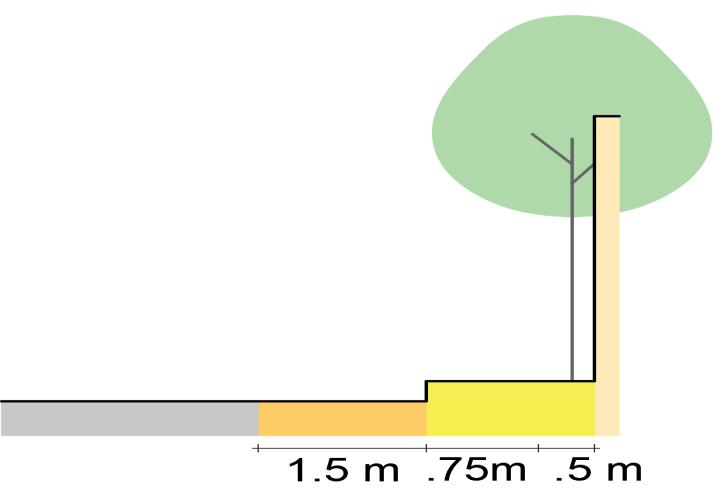
Parking Pedestrian Zone As per ITDP standards, the minimum width of the footpath in a residential area is 1.8 m.
Providing sidewalk extensions by reducing parking at some places could be done in the future to increases the pedestrian space.
Sidewalk extensions physically and visually narrow the roadway while increasing the available waiting space and provide areas for street furniture and benches, transit stops, trees, and landscaping.
Frontage

Figure 189. Existing residential street (source: Drawing by the author)(Date: May 29, 2021)
2. Mix used Street:
Mix used street on Gurukul has a 1.5 m frontage, 750 mm footpath, and 1.5 m parking zone. Because of this width of the footpath walking on footpath is very difficult for people. The solution of this street is given below:
Existing mix used street
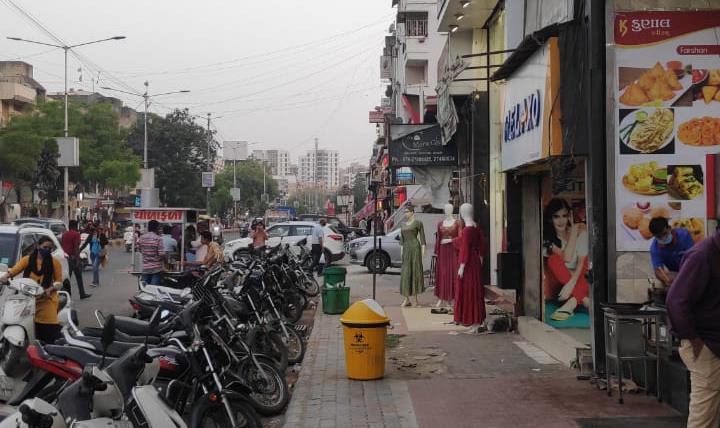
Figure 190. Mix used street, Gurukul (source: Photo by the author) (Date: March 20, 2021)
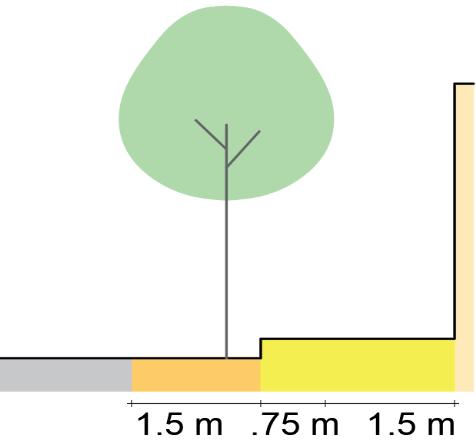
Parking Pedestrian Zone
Frontage

Figure 191. Existing mix used street (source: Drawing by the author)(Date: May 29, 2021)
Figure 192. Commercial street,Gurukul (source: Photo by the author) (Date: March 20, 2021)
3. Commercial Street:
• As per ITDP standards, the minimum width of the footpath in a mix-used area is 2.5 m.
• The first thing that might be done to improve the pedestrian space on a mixeduse street is to provide sidewalk extensions by eliminating parking in some areas in the future.
• • Moving on-street parking to secondary streets and using on-street parking space as a walkway is the second item that might be done for pedestrians in the future.
The commercial street on Gurukul has a 2.5 m frontage, 750 mm footpath, and 2.5 m parking zone. Because of this width of the footpath walking on footpath is very difficult for people. The solution of this street is given below:
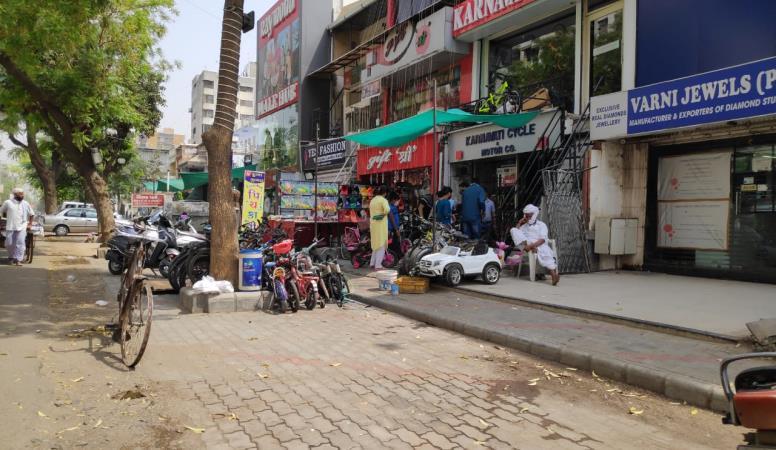
Existing commercial street
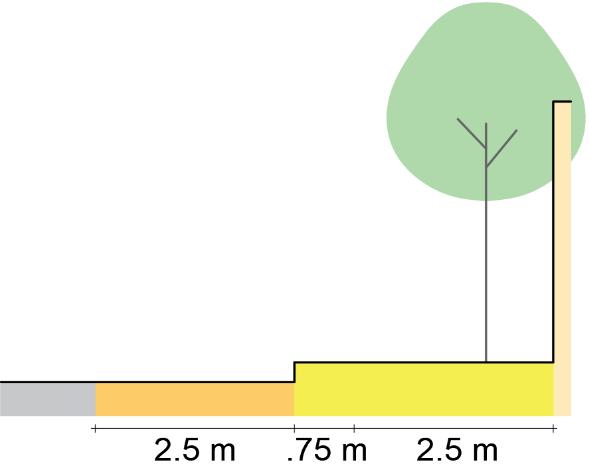
Parking Pedestrian Zone
Frontage

Figure 193. Existing commercial street (source: Drawing by the author)(Date: May 29, 2021) • The minimum width of a walkway in the commercial, according to ITDP guidelines, is 4 meters.
• One option for a walkway on a commercial street is to use one side of the street for onstreet parking and the other for a walkway.
• Moving on-street parking to secondary streets and using on-street parking space as a walkway is the second item that might be done for pedestrians.
7.2 ON-STREET PARKING
On-street parking is designated, managed, charged, and restricted in volume, enabling access to nearby properties without disturbing the flow of motor vehicles, pedestrians, and cyclists. Free on-street parking subsidises private vehicles. This subsidy is undesirable because it increases private motorised traffic—with all of its negative side effects, including congestion, air pollution, and reduced safety for pedestrians and cyclists. Hence, on-street Figure 194. Example of good on street parking (source: www.itdp.in/ better parking should be restricted, and streets better cities) (Date: June 01, 2021) whatever parking is available should be charged, not only to counter the mode shift to private vehicles, but also to serve as a significant source of funds for the improvement of public space, public transport, and non-motorised transport. On-street parking on Gurukul road is not designed formally and this causes delays, especially for buses, and may pose a safety hazard. Where footpaths are not provided, haphazard parking can create difficult conditions for pedestrians, who are forced to weave their way through the parking area or walk on the righthand edge of the parked vehicles, in moving traffic. Suggestions for these issues could be paid parking on street and designed on-street parking as per guidelines.
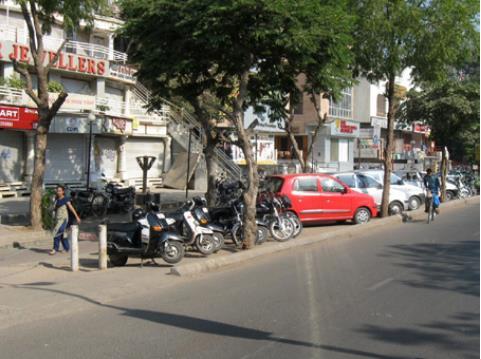
7.3 PEDESTRIAN REFUGES
Medians improve safety for pedestrians by functioning as refuge islands, which allow pedestrians to cross one direction of travel at a time. On Gurukul road height of the pedestrian, refuges are high compare to ITDP standards. Moreover, pedestrian refuges are not wide enough for pedestrians and create difficulties for pedestrians. Suggestions for these issues could be enhanced quality of pedestrian refuges by adding width according to standards and proper height for pedestrians.
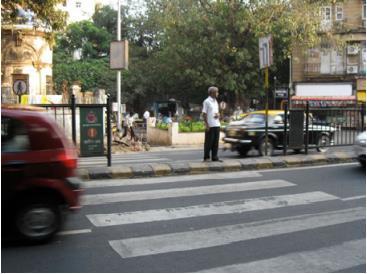
Figure 195. Example of good pedestrian refuges (source: www.itdp.in/ better streets better cities) (Date: June 01, 2021)
Figure 196. Example of good pedestrian crossing (source: www.itdp.in/ better streets better cities) (Date: June 01, 2021)
Figure 197. Example of good landscaping(source: www.itdp.in/ better streets better cities) (Date: June 01, 2021)
7.4 PEDESTRIAN CROSSINGS
Good pedestrian crossings allow pedestrians to cross busy streets safely and conveniently. It helps to cross the road safely for pedestrians. On Gurukul road, pedestrian crossings are indicated only by painted zebra markings. Since do not follow painted markings, such crossings do not provide any safety benefit to pedestrians. Therefore the suggestions for the future are, Raised crosswalks should be elevated to the level of the adjacent footpath (150–200mm above the road surface) with ramps for motor vehicles.
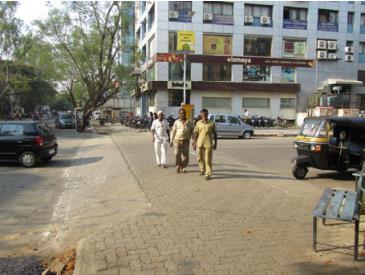
7.5 LANDSCAPING
Landscaping improves the liveability of streets. It plays a functional role in providing shade to pedestrians, cyclists, vendors, and public transport passengers. It also enhances the aesthetic qualities of the streets. It can be seen from the study and survey of Gurukul road that, there is not well-designed landscaping on street. It would demotivate people to walk on the street and people choose vehicles over a walk. The suggestion for this problem should be to provide a canopy tree as a shading device as per guidelines.








